Archaeomancer
The Silent Architects of Magic's Revival
"The world only needed us when it was broken. Now that it thinks it’s healed, we’re just reminders that the cracks are still there."
When The Shattering unraveled the threads of magic that bound the world, it left not only kingdoms in ruins but also the very fabric of reality trembling on the edge of collapse. In the midst of the chaos, a new kind of Wizard emerged. This Wizard cared less for summoning fire or bending time and focused instead on the echoes of magic left behind in the bones of the world. These became the first Archaeomancers, adventurers and scholars who went where others feared to walk, exploring forgotten catacombs, sunken cities, and crumbling temples in search of the secrets that might help restore a shattered world. An Archaeomancer is not just a mage, though their command of magic is without question. Nor are they simple treasure hunters, even if the treasures they seek are unlike any others. They stand between past and present, using spells and tools to uncover the relics and rituals of lost civilizations. With every artifact they recover and every shattered glyph they interpret, they bring Aerith closer to recovering what has been lost. The profession draws the finest minds and bravest spirits from across the land. Dwarves bring ancient skill in stonework, and elves offer the patience needed to unravel the secrets of time. Archaeomancers are not born into their craft. They are forged through years of study and dangerous expeditions. The most respected are trained at The Temple Observatory, a legendary island city where knowledge is held above all else. There they learn both the theories of magic and the practical skills needed to navigate collapsing ruins and survive the guardians that still linger, protecting secrets long forgotten by the world above. Unlike the wizards who remain shut away in towers, Archaeomancers face constant danger. Ancient wards and curses still pulse with unstable power. Mishandling a rune or disturbing a buried relic can unleash forces beyond control. The ruins are neither fully dead nor entirely alive. They are charged with lingering magic, defended by old traps, and sometimes occupied by beings born from The Shattering. What Archaeomancers discover is not meant for display in museums. Their finds are living pieces of a forgotten age. Some recover fragments of spells once thought mythical and restore them to modern use. Others unearth enchanted relics that were once regarded as marvels even in ancient times. A rare few uncover something greater still, faint traces of pre-Shattering magic that hint at powers beyond comprehension. These findings remind the world that much remains hidden beneath its surface. Despite their impact, most Archaeomancers live and work alone. They owe no loyalty to kings or councils but follow the pull of the unknown. Only an Archaeomancer truly understands the weight of magic. They see it not as a tool of war or status but as the lifeblood of the world. To them, the ruins scattered across Aerith are not symbols of failure. They are signs of survival. Many mistake an Archaeomancer for a common wanderer at first. Their robes are often dusty, their packs heavy with strange objects, and their eyes lit with the fire of discovery. But anyone who speaks with them quickly learns the truth. These are people who have seen what others cannot imagine. They walk forgotten roads, brush against ancient power, and struggle with mysteries that have outlasted empires. The world owes more to these magical explorers than most will ever know. Without their work, magic would remain a fading spark. Because of their effort, it burns brighter with each passing year. The story of the Archaeomancer is not one of conquest or fame. It is a story of devotion, of discovery, and of the belief that the past still holds the keys to the future.
Career
Qualifications
"The deeper you dig, the more polite you become. Rank doesn’t save you from a collapsed vault."
To become an Archaeomancer is to follow a path that demands both intellectual rigor and practical skill. While anyone with a spark of magical talent and a curiosity for the past might dream of joining their ranks, the journey requires much more than raw potential. Archaeomancy is not a profession one drifts into. It is earned through years of commitment, discipline, and study. The training of any aspiring Archaeomancer begins with formal instruction in wizardry. A solid grasp of Arcane Magic is not merely helpful but essential, as it forms the basis of the work. Prospective Archaeomancers must first master the fundamentals of spellcasting, arcane theory, and magical principles. This early phase of training often resembles that of a conventional Wizard, but those aiming for Archaeomancy soon branch into more focused studies. For those able to secure a place, The Temple Observatory serves as the most esteemed center of instruction. It gathers the brightest minds from across Aerith and offers them the tools to refine their craft. Inside its high towers and long halls, students of Archaeomancy study ancient languages, lost symbols, and the rites of vanished civilizations. They are trained to examine ruins and relics with the same care and attention that traditional wizards give to spellcraft. Field methods such as magical excavation and the preservation of enchanted artifacts are also central to their preparation.
Even so, not all Archaeomancers are products of The Temple Observatory. Other academies across the world provide instruction in the discipline, though often with fewer resources and less recognition. Some Archaeomancers chart their own course, driven by instinct and determination. These independent scholars gather knowledge through direct experience, learning as they go while exploring ruins on their own. Although they may lack formal titles or institutional support, their discoveries speak for themselves. Beyond formal training, certain traits are indispensable to the craft. A strong body and sharp instincts are vital, as fieldwork frequently involves real danger. Patience is necessary, for ancient secrets do not reveal themselves quickly. Most of all, an Archaeomancer must carry a deep and constant desire to understand the world as it once was and to uncover the truths it has buried. Success in the field is not enough. Archaeomancers must also engage with the wider scholarly world, regardless of its rivalries and conflicts. Whether by publishing findings, presenting at arcane gatherings, or working with peers, they must learn to navigate the demands of an academic community that can be both demanding and political. Their reputation and future opportunities often depend as much on how they share their work as on the work itself. In the end, an Archaeomancer is more than a Wizard or a scholar. They are explorers and thinkers, practical in their methods and bold in their vision. What they recover from the ruins of the past serves not just their own ambitions but the hopes of an entire world. Through their efforts, the ancient magic that once seemed lost may yet find new life.
Career Progression
"You’re not a Master because you found more. You’re a Master because you know what not to touch."
The path of an Archaeomancer is as complex as the ruins they study, filled with challenges, achievements, and moments of transformation. Although each journey is unique, certain milestones remain consistent, marking the progression from novice to master. The road is long and often dangerous. Yet for those who stay the course, the rewards are as meaningful as the risks. Every step forward brings not only a deeper understanding of the past but also a chance to shape the future of magic in Aerith. The journey begins with apprenticeship. Whether under the guidance of an experienced Archaeomancer or within the walls of a formal institution such as The Temple Observatory, apprentices are introduced to the foundational skills of the trade. During this stage, they study magical theory, ancient scripts, artifact handling, and excavation methods. Much of their time is spent supporting senior Archaeomancers by managing tools, cataloging discoveries, and recording findings. This is a period of hands-on learning, usually in safe environments such as reconstructed dig sites or controlled magical zones. Apprentices are rarely sent into the field on their own. However, those who show strong ability may be invited to accompany their mentors on active expeditions. After completing their apprenticeship, the aspiring Archaeomancer becomes a Seeker. This stage marks their first real tests. Seekers travel into the wilds to investigate ruins and lost places, driven by a mixture of discipline and wonder. They often work under contract for magical academies, wealthy benefactors, or state institutions, all of whom expect a share of whatever is uncovered. Seekers usually operate in teams and collaborate with specialists such as historians, translators, and magical engineers. Their success depends on the quality of their findings and the clarity of their research. It is also during this time that many begin to specialize in particular regions or historical eras. As a Seeker builds a record of significant discoveries and contributions, they may rise to the level of Scholar Explorer. At this point, their name begins to carry real weight. Scholar Explorers are invited to speak at academies, present research at professional gatherings, and publish work that shapes the understanding of ancient magic. With growing respect comes greater independence. Scholar Explorers often direct their own projects, raise their own funding, and choose their own teams. Many use this freedom to pursue the most difficult questions in their field, entering ruins considered too dangerous or complex for others. Their work continues to carry risk, but now it is driven by a clear intent to shift the boundaries of knowledge. The highest distinction an Archaeomancer can attain is that of Master of Antiquities. This title is not granted by any governing body. It is earned through a career of lasting achievements. Masters of Antiquities are known throughout the magical world. Their discoveries have changed the way scholars think about magic. Their names are spoken with admiration and respect. At this point, their role often extends beyond fieldwork. They may advise political leaders, manage academic departments, or lead major research initiatives. Their presence alone can attract funding and talented collaborators. While some continue to explore, many focus on teaching and ensuring that their knowledge is passed on to the next generation. Only a few Archaeomancers ever reach the peak of recognition, where their names become linked to the identity of the profession itself. These are the rare individuals remembered not only for what they uncovered but for how their work reshaped the world. They are the ones who retrieve artifacts of immense power, explain the origins of The Shattering, or bring lost spells back into use. Their careers often end with achievements so significant that they become part of history. These may include misaligned ley line, revealing a city lost before recorded time, or retrieving a magical relic that alters the course of events. At this level, the Archaeomancer becomes more than a practitioner. They become a symbol of what is possible when the past is honored, studied, and understood.
Payment & Reimbursement
"The work is priceless. That is why no one wants to pay for it."
In the life of an Archaeomancer, fortune takes many forms. Some count their wealth in Gold. Others value the shimmering artifacts pulled from the ruins of civilizations long gone. For most, the highest reward is knowledge. This kind of insight can alter the fate of a kingdom or restore even a small piece of what was lost during The Shattering. Still, no matter how brilliant or driven, no Archaeomancer can live on discovery alone. The world demands its price, and compensation becomes an unavoidable part of the profession. Most Archaeomancers begin their careers supported by academic funding. Institutions such as The Temple Observatory and other leading magical academies offer stipends to help apprentices and new practitioners get their start. These sums are modest, just enough to cover simple living expenses, but they provide stability. With that support, students can concentrate on their studies and early expeditions without falling into ruin. Some may receive scholarships or research grants, though these always come with conditions. The universities expect results, and a newcomer's first major find often belongs more to the academy than to the individual.
As an Archaeomancer gains experience and recognition, new opportunities for wealth begin to appear. Wealthy patrons take an interest. Noble families, trading houses, and private collectors look to sponsor those who show promise. Their offers are often generous. Private transport, refined tools, and skilled crews are provided in exchange for a share of the discoveries. Some Archaeomancers thrive under such arrangements, grateful for the freedom from institutional control. Others find themselves constrained by the demands of their sponsors, who often place profit and influence ahead of scholarship. Governments also play a role in the profession. Many kingdoms, eager to recover their lost heritage or gain magical advantage, employ Archaeomancers directly. These contracts are well paid and backed by national resources. However, they come with their own burdens. Government oversight can become rigid, and the rights to any finds often become entangled in politics. What is recovered for the crown may never be seen again, locked away or used to serve state interests. For those unwilling to answer to academy, sponsor, or crown, there remains one final option. Some Archaeomancers choose to fund their own expeditions. These individuals face enormous risk. They borrow, spend savings, or sell old relics to finance their next journey. They answer to no one and keep whatever they find. But failure means ruin. Success brings independence, wealth, and sometimes a place in history. Every artifact and every trace of forgotten knowledge becomes theirs to claim. Even so, among all the payments and rewards, prestige remains the most enduring currency of the profession. To reveal a lost spell or solve a mystery that has lingered for centuries is worth more than coin. An Archaeomancer who unlocks the power of a pre-Shattering relic earns a kind of respect that no money can buy. These achievements lead to offers of academic tenure, audiences with kings and scholars, and new channels of support from those who value true discovery. But prestige, too, is secondary to something greater. Every Archaeomancer knows the moment when the dust settles and the light falls on an object untouched for ages. It might be the glow of a rune or the quiet pulse of ancient magic springing to life again. In that moment, debts and dangers disappear. What remains is the certainty that something lost has been found again. That moment is its own reward. This is the true payment of the Archaeomancer. A life marked by uncertainty and risk, yet filled with purpose. For those who follow this path, it is enough.
Other Benefits
"Three years, five expeditions, six broken ribs, and the crown still hasn’t reimbursed the rope."
The rewards of an Archaeomancer's life reach far beyond coin or contract. While financial compensation provides the means to survive and continue their work, it is not what defines the profession. What truly sets this path apart are the intangible gains. An Archaeomancer who endures long enough to build a name receives more than wealth. They earn influence, respect, and a legacy that carries weight. For those who uncover the secrets of the past, fame often follows without effort. To be the one who translates a forgotten spell, restores a broken artifact, or reconstructs the story of a lost civilization is to be remembered. Such names are spoken in lecture halls and whispered in marketplaces. Their discoveries become part of the world’s memory, and their identities remain tied to those achievements. This recognition is not limited to scholars and mages. Rulers, merchants, and priests all pay attention to those who redefine magical understanding. Prominent Archaeomancers may be summoned to court, asked to advise leaders, or called upon to shape policy. Their presence is seen as a source of wisdom and insight. Their influence comes not only from what they find, but from how they think and interpret the world.
Recognition also takes physical form. Awards are given. Titles are granted. Ceremonial honors are bestowed. A respected Archaeomancer may be named a Fellow of The Temple Observatory, their name carved into the marble of its halls. Others may be granted honorary citizenship, or gifted tokens of gratitude by communities that benefit from their work. Beyond public recognition, there is the esteem that comes from belonging to a respected profession. Archaeomancers, especially those tied to known institutions, are seen as intellectual leaders. To be counted among them is to be known as someone of rare skill and clear purpose. Even those who do not understand magic know that an Archaeomancer carries the weight of knowledge and the responsibility of preservation. There are also rewards that only an Archaeomancer can fully appreciate. The work provides purpose. Each ruin explored and each artifact studied is part of a larger mission to rebuild what has been lost. For many, that sense of meaning carries more value than coin. It is the belief that their efforts matter not just to their own lives, but to the well-being of the world. The deepest reward is often personal. Archaeomancers do not only uncover relics. They uncover perspective. As they study the ruins of the past, they begin to understand the shape of the world and their place within it. The lessons they learn are not written in books. They are found in the silence of abandoned temples, in the structure of ancient spells, and in the patterns left by those who came before. That kind of understanding cannot be taught. It is earned. The benefits of being an Archaeomancer are broad and lasting. Some are visible. Others are felt in the quiet moments when knowledge takes root. Fame, respect, and purpose are all part of the reward. So is the growth that comes with walking the path with courage and patience. For those willing to take the risk, there is no higher calling.
Perception
Purpose
"You will spend six months in a ruin and six more arguing over what you saw. Both are the job."
The role of an Archaeomancer is both contradictory and vital. They are the quiet builders of magic’s return, working through the remnants of the past to restore what was broken during The Shattering. Yet despite the scale of their mission, their contributions are often overlooked by the very societies that rely on their efforts. Kings and merchants may take pride in their magical cities and enchanted armies, but few stop to consider the scholars who made those wonders possible. At its foundation, the work of an Archaeomancer centers on the recovery and restoration of magical traditions lost to time. In a world where magic is essential to both progress and survival, this effort is nothing less than critical. Without their constant search for truth, the arcane arts would remain scattered and incomplete, little more than dying embers left in the aftermath of catastrophe. Every spell cast and every relic used owes a part of its existence to the quiet persistence of these scholars. Within the world of academia, the Archaeomancer stands at the frontier of knowledge. Their discoveries provide the building blocks of magical theory. Ancient symbols, long-lost rites, and broken spell matrices become the foundation for new learning. Universities and arcane schools rely on this work to train young casters and fuel progress in the study of magic. Without Archaeomancers, research would slow to a crawl, hemmed in by the limits of what little survived the age of collapse. Their influence reaches far beyond the walls of universities. Though their names may be unknown to the wider world, their discoveries shape it nonetheless. The relics they recover are passed into the hands of craftsmen and spellwrights, becoming tools, weapons, and devices that shape trade, defense, and daily life. Reconstructed spells form the basis of modern arcane use, serving healers, builders, and wardens across every region. Through this work, the Archaeomancer connects the present to the forgotten past. Their influence is broad, though rarely seen. Despite all of this, the Archaeomancer’s standing remains strangely quiet. They are not counted among heroes or widely beloved figures. Their efforts are often too complex and their results too subtle to hold the attention of the public. A farmer may rely on an enchanted plow without knowing who uncovered the rune that powers it. A soldier may swing a burning blade in battle without ever hearing the name of the one who deciphered its ancient forging spell. Still, the Archaeomancer continues, moved not by the hope of glory but by the worth of the work itself. They serve as guardians of history and caretakers of wisdom that must not be lost. In the long record of Aerith, they are the unseen lines that tie past and future together. They ensure that what was once known does not vanish. Though their contributions often go unacknowledged, the world as it stands could not exist without them. And the world that follows will depend on them just as deeply.
Social Status
"They want us in the room when the relic starts glowing, and out of it before they decide who gets to keep it."
In the eyes of society, the Archaeomancer is often viewed as little more than an overeducated eccentric. They are seen as Wizard scholars who spend their time combing through crumbling ruins and ancient texts in search of knowledge long forgotten. Perpetually overworked, underfunded, and always convinced they are one discovery away from something monumental, they are regarded as the magical equivalent of a lifelong student. They are thought to be brilliant, perhaps, but impractical and detached from the concerns of ordinary life. Even though their work has rebuilt the foundations of modern magic, most people remain unaware of what they have contributed. Within academic circles, they often stand in the shadow of more dazzling disciplines. Evokers draw attention with shows of force. Artificers impress with clever devices. Diviners earn praise with timely predictions. By comparison, Archaeomancers are quiet figures who work behind the scenes. They reconstruct ancient knowledge piece by piece, with little drama or spectacle. Their work is recognized in scholarly journals and academic forums, but rarely does that recognition reach beyond the classroom or the lecture hall. The profession offers few financial rewards. Most Archaeomancers survive on inconsistent support from sponsors or the limited funding of educational institutions. Their budgets are fragile and easily cut. Very few ever become wealthy. Many live modestly, driven by the belief that their next find may finally bring success. For most, the real reward is not measured in Gold but in the work itself. They are sustained by a deep, personal devotion to the past and to the truths that still lie hidden. In this way, the Archaeomancer remains at the edge of public awareness. They are necessary but unseen, respected by some but celebrated by few. Though they are unlikely to be remembered as heroes or legends, their patient labor keeps the heart of magic beating. For those who choose to follow this path, that quiet knowledge is enough. It is enough to know the work has value, even if the world never stops to notice.
History
"We are not here to resurrect the past. We are here to stop it from being forgotten wrong."
The history of Archaeomancy is marked by both triumph and slow decline. It is the story of a profession once seen as essential to the survival of the world, which gradually faded from prominence as its urgency diminished. In the chaotic centuries that followed The Shattering, the first Archaeomancers were regarded as saviors. With magic unraveling and civilization close to collapse, these scholar wizards journeyed into the remains of ancient cultures to recover the arcane knowledge needed to rebuild. Each discovery they made, whether it was a lost spell, a functioning relic, or a piece of forgotten magical theory, was met with awe and gratitude. They were praised as heroes. Their names appeared in songs, their achievements recorded in the histories of kingdoms. For generations, Archaeomancers stood at the heart of magical renewal. They reconstructed the nine tiers of arcane spellcasting that now form the foundation of magical study. Their findings shaped the construction of magical cities and the training of future wizards. Their status was one of high esteem. To be an Archaeomancer during this time was to hold a position of both intellectual leadership and national pride. But as magic returned and society began to recover, the urgency that once defined their work began to fade. The major discoveries had already been made. The essential structures of magic were in place. The arcane arts were no longer in danger. They had become stable and widespread. With this shift, Archaeomancers were no longer needed in the same way. What had once been vital became historical. Their efforts were still valued, but they were no longer central to the future of magic. In the time of the magical renaissance, Archaeomancers found themselves moving to the edges of relevance. Their contributions still mattered, but fewer people noticed. New findings were often treated as academic footnotes. A rare spell or forgotten artifact might capture attention for a moment, but these events no longer changed the course of history. For the average person, the return of magic was complete. That was enough. Today, the profession remains, though its place has changed. It is still respected, but no longer revered. The excitement that once followed their discoveries has quieted. Most of the world no longer watches their work, no longer waits on their results. Even so, the core of the profession endures. Archaeomancers continue to search the ruins of the past, not to win praise, but to preserve the truth. Their devotion is not driven by reward. It is sustained by a belief that the past still holds meaning. Although the world no longer celebrates them as it once did, their work remains necessary. Without them, what was lost would stay buried. And while they may no longer hold the spotlight, they ensure that the knowledge of past ages is not forgotten. Their presence may be quiet, but their purpose remains.
Operations
Tools
"The brush is as sacred as the wand. One clears away dust. The other clears away doubt."
The tools of an Archaeomancer may appear unremarkable to the casual observer, but they are as important to the craft as any spell or insight. At first glance, their gear might seem indistinguishable from that of an ordinary archaeologist. Brushes for careful excavation, chisels for cutting through aged stone, and notebooks filled with rough sketches and field notes all play a role in their work. Unlike their non-magical counterparts, however, Archaeomancers enhance these instruments with arcane power. A prepared Archaeomancer does not set out without magically reinforced excavation tools. A trowel or pick that has been enchanted to resist damage and wear can mean the difference between recovering a relic intact or destroying it through clumsy handling. Fine brushes marked with symbols of precision allow for the safe removal of centuries old dust and residue from delicate surfaces without harm.
One of the most valued items in their collection is the arcane resonance detector. These unusual instruments are designed to sense the lingering presence of magic in a location. Some take the form of handheld mechanisms, while others are small crystals that emit a soft glow when exposed to residual energy. With these devices, the Archaeomancer can locate forgotten ley lines or identify areas where ancient spells once held power. Their documentation tools also benefit from enchantment. Rather than using ordinary parchment and ink, the Archaeomancer records findings with scrolls, magical quills, and special inks that replicate ancient markings with perfect clarity. These notes preserve even the faintest runes or fragments of glyphs, which are later studied in detail to unlock their meaning. The process is painstaking, but the accuracy it offers is unmatched. Alongside these materials, every Archaeomancer carries a spellbook. It contains not only the basic magic required for survival and protection, but also spells selected specifically to support their fieldwork. Simple incantations such as Mage Hand assist in handling fragile objects. More advanced spells like Detect Magic and Identify help determine the nature of what has been found. When a relic is damaged, Mending can restore it before it is lost to time. Practical tools round out their supplies. Lanterns provide light in the dark passages of ruined cities. Ropes and climbing gear help navigate treacherous terrain. Reliable equipment for food and shelter is essential in the wild places they explore. While their magic can assist in many ways, the ruins of Aerith remain dangerous, and experience has taught every Archaeomancer to prepare carefully. It is this combination of simple tools and powerful magic that defines the work of an Archaeomancer. With brush and spell alike, they uncover what has been hidden for ages. Through their efforts, even the most ordinary object can reveal something extraordinary. In their hands, each tool becomes a bridge between what is known and what has yet to be discovered.
Workplace
"The ruin lies. The archive lies. The only truth is the one you piece together with dirt under your nails."
The workplace of an Archaeomancer exists in two very different worlds. One is the rugged and unpredictable setting of the field. The other is the quiet and orderly realm of scholarly institutions. Much like the adventuring scholars of earlier ages, Archaeomancers divide their time between expeditions into forgotten places and the academic spaces where they record, study, and share their discoveries. In the field, the work environment is raw and filled with uncertainty. The air carries the scent of damp soil, ancient dust, and at times the sharp trace of magic left behind by long-dormant wards. The sounds are just as distinct. Tools scrape against stone. Resonance instruments hum softly. Assistants mutter as they navigate unstable ground. Nearby, tents and temporary workstations are set up with tables stacked high with relics, rough sketches, and glowing magical devices. Every moment in this space holds the possibility of breakthrough or failure. The tension and anticipation never leave. At universities and research halls, the Archaeomancer returns to a setting of reflection and precision. Their offices and libraries are filled with books on history, magic, and the theory of lost arts. Desks are often cluttered with notes, fragments of pottery and stone kept safe in magical containers, and spellbooks marked with quiet wards. The air smells of ink and old parchment. Everything about the space reminds them of the careful work that follows each expedition. Lecture halls also form part of their professional life. There, they shift from explorer to teacher. Students fill the seats, pens moving quickly as the Archaeomancer explains the meaning of old runes or the structure of a forgotten spell. The room carries the quiet hum of interest and learning. At times, a simple demonstration spell or a passed artifact adds motion to the lesson. These teaching moments are vital. They ensure that what is recovered in the field is not lost again. No matter the location, one truth remains constant. The workplace of the Archaeomancer always sits at the meeting point between past and present. Whether they are deep in the ruins of a vanished civilization or seated at a desk under lamplight, their surroundings reflect their purpose. They exist to preserve what once was and to carry that knowledge forward. Even if the world never fully sees their labor, it continues to benefit from the truths they recover.
Provided Services
"They want the relic, but not the history. They want the spell, but not the language. They want the magic, not the cost."
The services of an Archaeomancer are both specialized and essential, though often misunderstood by those outside the field. While their work focuses on the recovery and preservation of magical knowledge, their expertise can be applied in many ways. Some of these applications are practical, others more obscure, but all rely on their unique training. Whether unlocking ancient secrets or addressing modern challenges, the Archaeomancer provides a range of services that, although narrow in scope, are indispensable to those who need them. Their foremost role is in the recovery and interpretation of magical relics. When ancient ruins are uncovered or forgotten artifacts emerge, it is the Archaeomancer who is brought in to determine their nature. They identify whether an object is a harmless historical piece or a weapon from before The Shattering. Their knowledge of magical principles and ancient societies allows them to assess the object's value, purpose, and most importantly, the danger it may pose. Rulers, guild leaders, and private collectors often rely on them to identify, stabilize, or replicate powerful magical items. Another major service is the reconstruction of lost spells and rituals. Through close study of old inscriptions, arcane symbols, and damaged spell matrices, Archaeomancers can revive magical practices that have not been seen for generations. These efforts are difficult and time consuming. Each recovered spell enriches modern magic and strengthens the overall understanding of how magical forces work. Researchers and magical schools often depend on Archaeomancers to provide the raw material from which new discoveries are made.
Their knowledge is also valuable in a consulting role. They are sometimes asked to advise a city on how to repair an unstable ley line or to assist an artificer with recreating a complex magical mechanism. Historians may seek their help to reconstruct the events or cultures of the pre-Shattering age. In matters where history and magic overlap, few can offer insight equal to theirs. For this reason, both governments and private institutions turn to them when the questions are difficult and the risks are high. In more active roles, Archaeomancers may be hired to support expeditions into dangerous or unexplored areas. Adventurers, treasure seekers, and even military units sometimes bring them along to help interpret ancient threats and navigate safely through hostile ruins. Their blend of magical skill and archaeological experience makes them especially well suited to understanding the layout and hazards of sites built long ago. They also serve in academic roles, though this contribution is often overlooked. Many Archaeomancers teach at universities, publish formal studies, or mentor younger students. Through this, they ensure that the knowledge they recover does not remain locked within a small circle. While this may appear less impressive than fieldwork, it may well be their most enduring impact. Passing on the wisdom of the past prepares others to carry the work forward. Although the modern age has seen a return of widespread magical power, the role of the Archaeomancer remains relevant. Their ability to connect the past to the present, to shape fragments of forgotten knowledge into tools for the future, secures their place in the world. Whether the task involves interpreting a relic, restoring a lost incantation, or guiding an expedition through a place that time has buried, the Archaeomancer remains the one who holds the key to the secrets that came before.
Dangers & Hazards
"The ruin is not empty. It waits. It listens. And it remembers why it was sealed."
The dangers faced by an Archaeomancer reach far beyond collapsing ruins and forgotten traps, though these remain constant threats. To pursue this path is to invite misfortune in many forms. These include physical peril, magical consequence, social opposition, and a creeping fixation with the past that can consume both mind and purpose. Ancient sites are seldom empty in spirit, even if they are deserted in body. Folklore has long warned against interfering with what lies buried, and such warnings are not without cause. Many Archaeomancers have encountered curses left behind by civilizations long vanished. These magical protections were designed to stop exactly the kind of exploration that defines the profession. The effects of such curses vary. Some weaken the mind. Others twist fortune or trap the soul within the very object that was disturbed. An Archaeomancer may leave a ruin appearing unharmed, only to discover that their sleep is filled with voices or that their fortunes falter without reason. Another risk lies in the nature of what they uncover. Relics of the past often carry great mystery, but not every mystery is meant to be solved. Some artifacts were hidden away because their power proved too dangerous. There is no greater misstep than awakening a weapon or device that cannot be controlled. Even passive study can be harmful. The energies within these objects may alter the mind or attract attention from beings that should never be disturbed. There are also social threats to consider. Although many Archaeomancers believe their work serves the public good, not all share that view. Competing nations, academic rivals, and greedy treasure hunters all pursue the same ruins and relics. Some are willing to kill to claim them. Artifacts often become tools of power, used in politics and war. An Archaeomancer who refuses to surrender a find to the expected authority may face charges of theft or worse. Obsession is another danger, subtle but destructive. The past holds a powerful lure. Many Archaeomancers spend years chasing rumors and deciphering maps that lead to nothing. They search for artifacts that may not exist. Their focus isolates them from colleagues, destroys their personal lives, and drains their resources. The tale of the Archaeomancer who dies alone in a cluttered room filled with meaningless relics is common among those who remain in the field long enough to witness it. Beyond all these threats is the ever-present weight of the unknown. Folklore tells of explorers punished for disturbing what should have remained hidden. Some speak of divine wrath. Others describe guardians who never died. While few Archaeomancers begin their careers with such beliefs, time and experience often teach a cautious respect. Some things are buried for good reason, and not every secret must be revealed. Despite all of this, Archaeomancers continue their work. They do so knowing that each ruin, each relic, and each symbol may offer either enlightenment or catastrophe. The risks are real, but the past calls to them with a voice that cannot be silenced. They answer that call not because it is safe, but because they believe it is worth the cost.
"If you think this is about relics, leave now. It is about records, rot, and things you cannot unknow."
Alternative Names
Dustweaver or Ash Chaser
Type
Research / Scientific
Demand
Low to Moderate
Famous in the Field
"Training teaches you how not to break things. Experience teaches you what not to wake up."




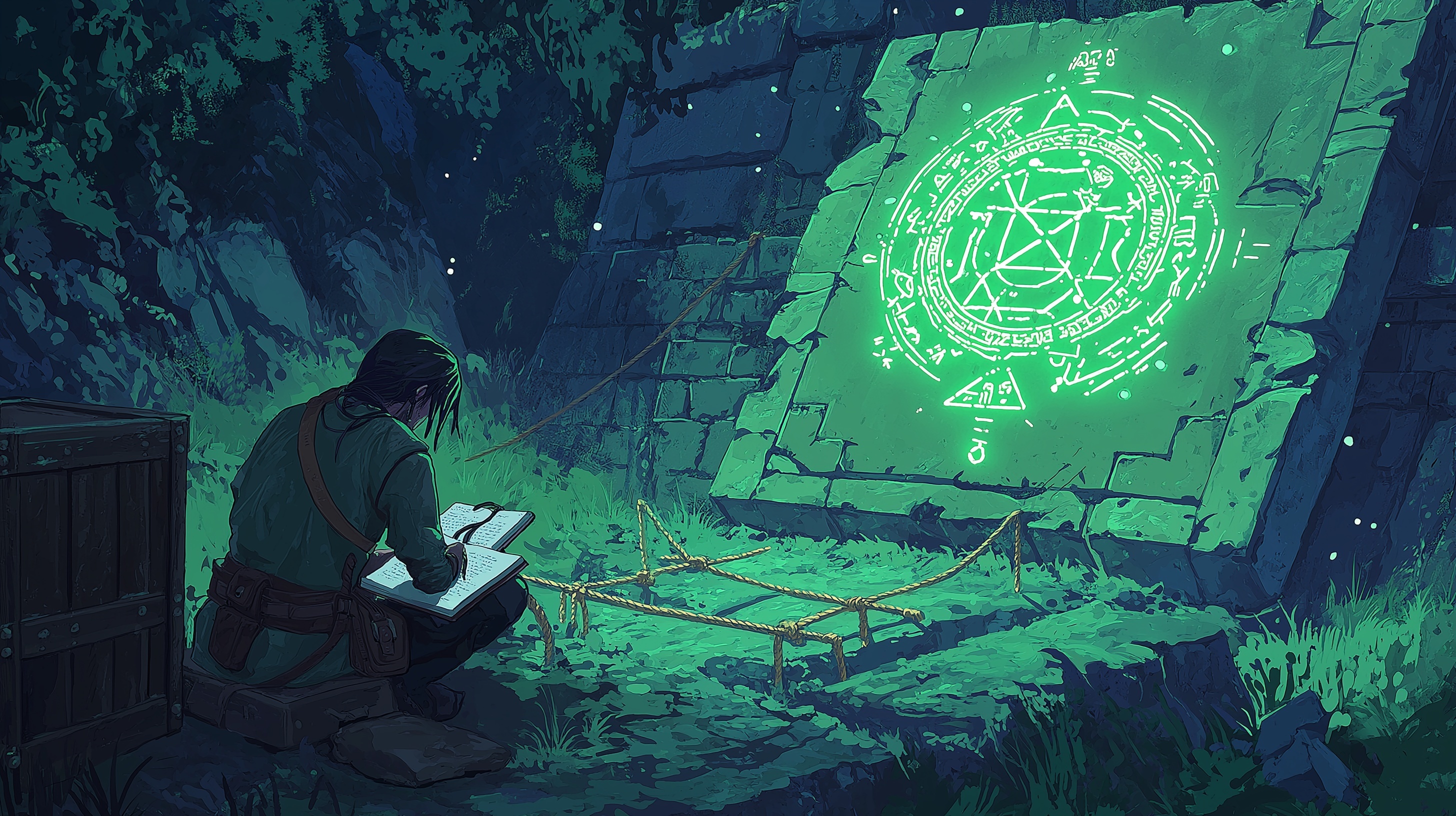
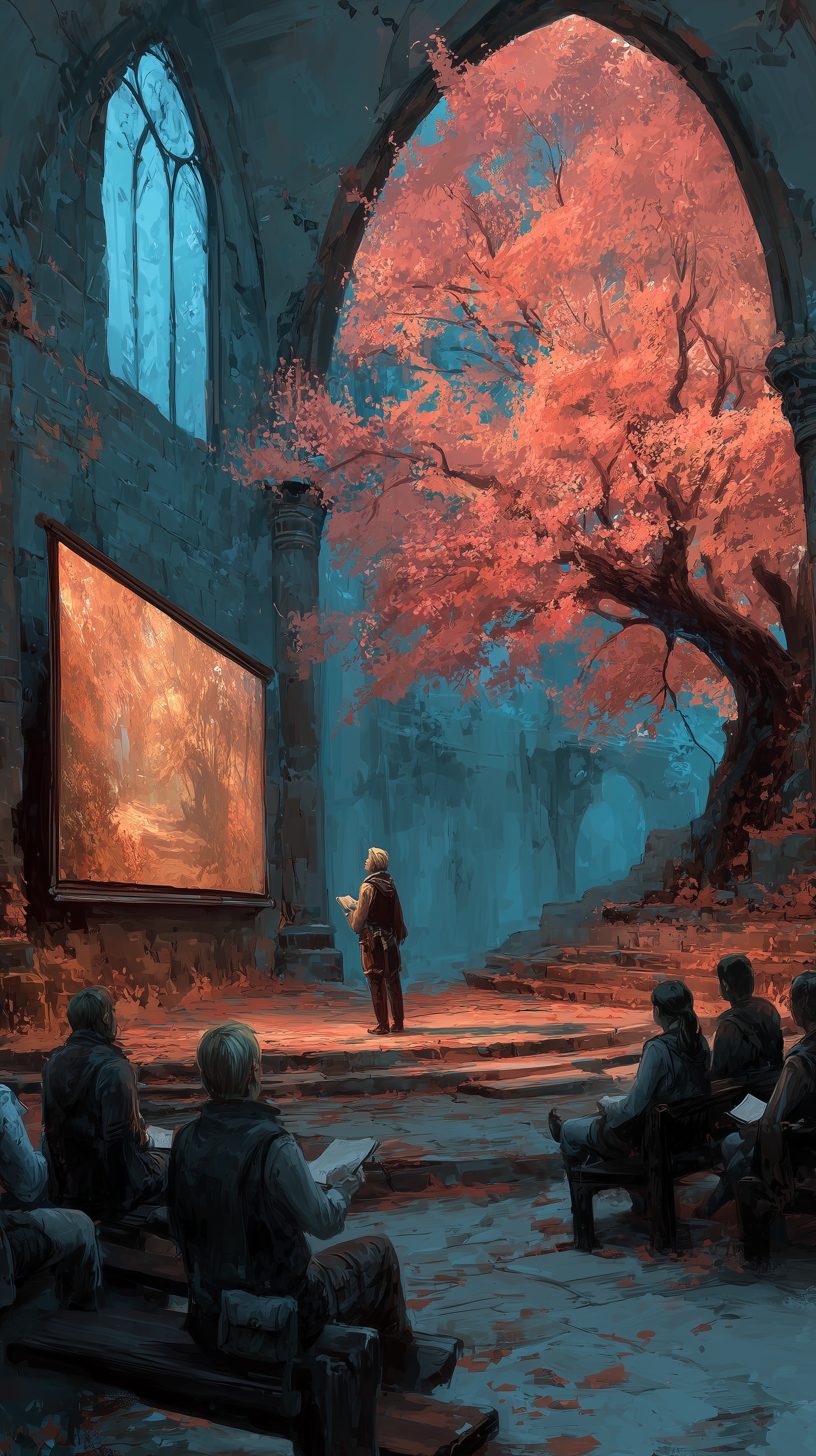

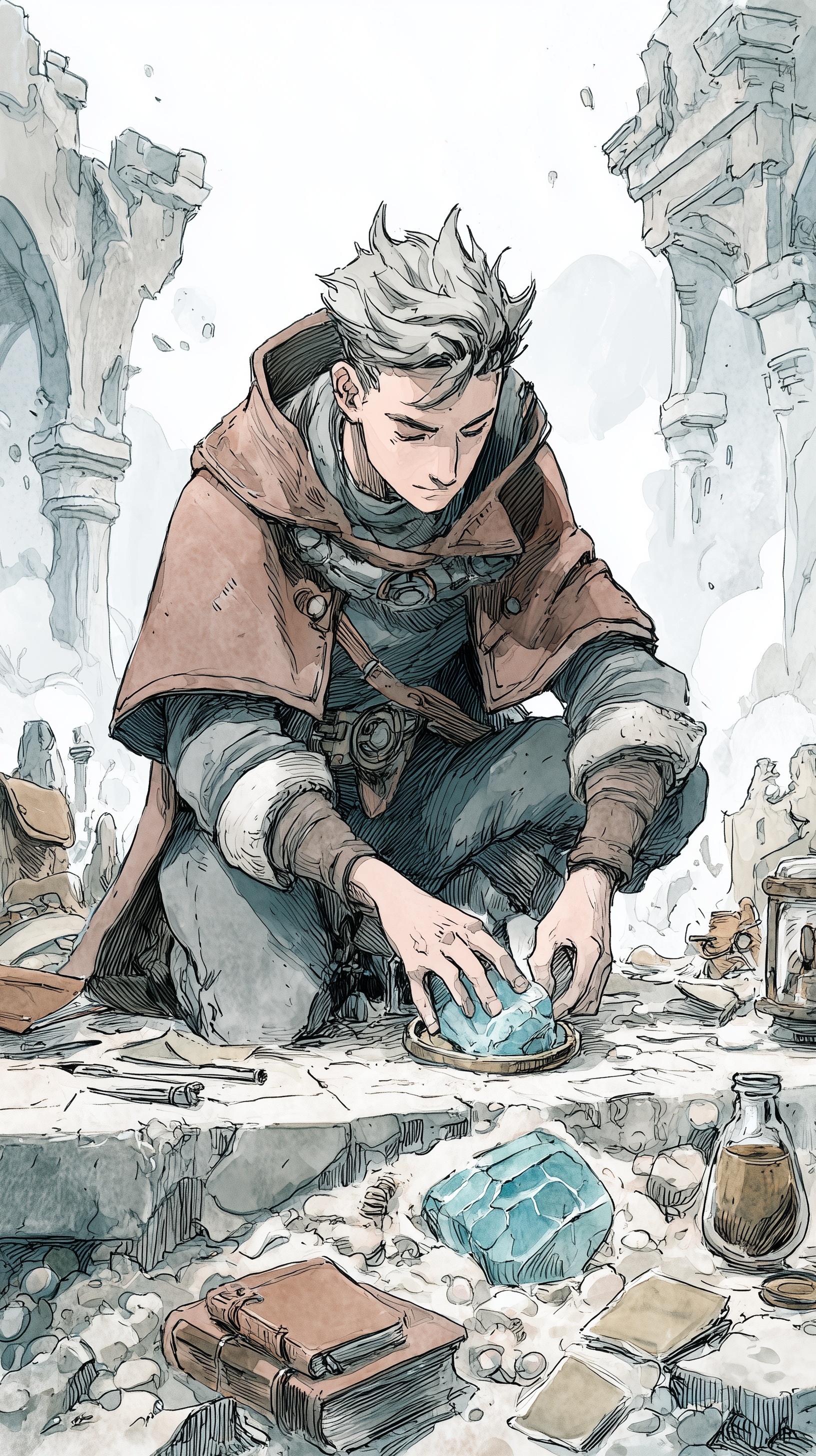
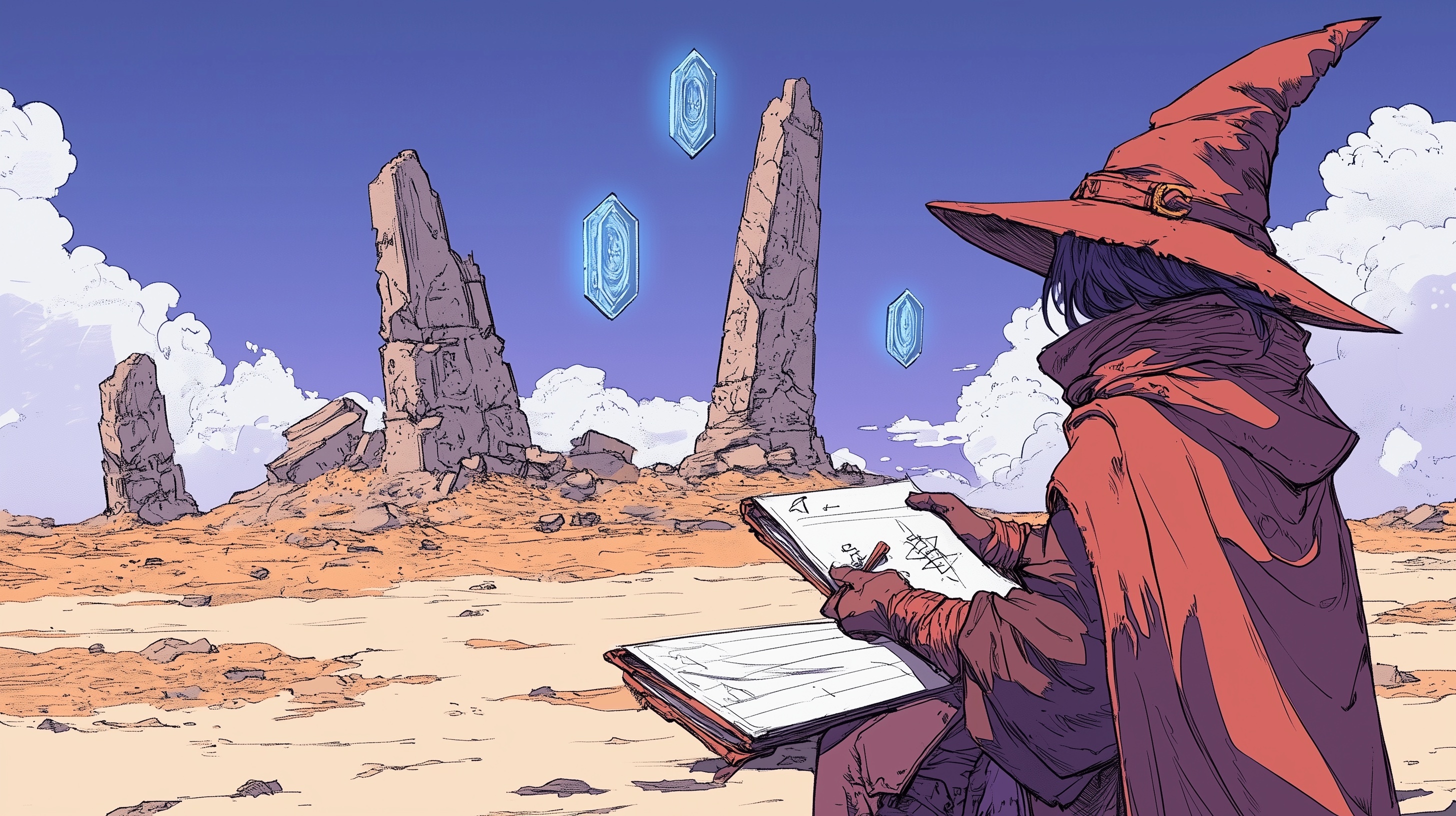
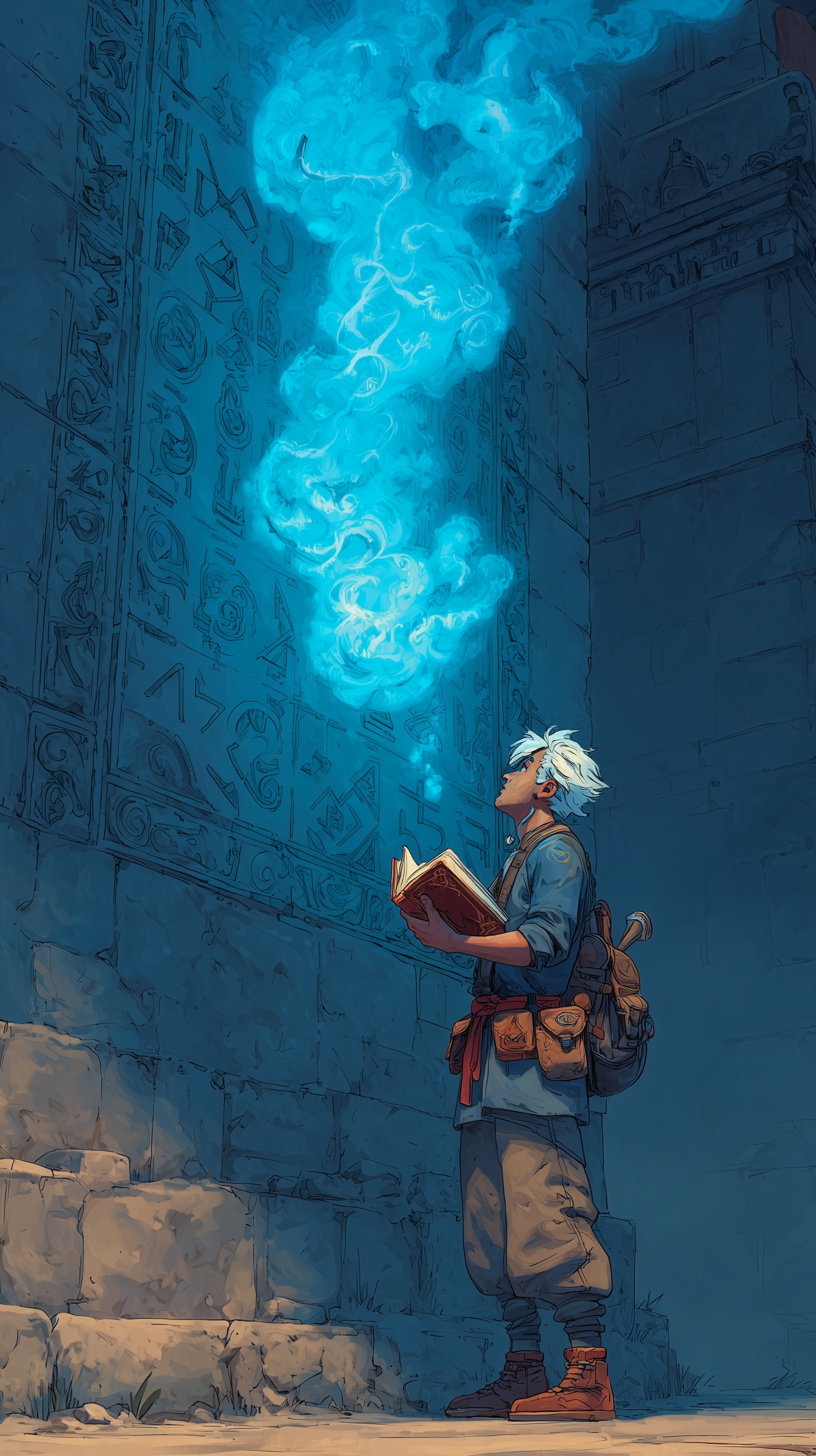
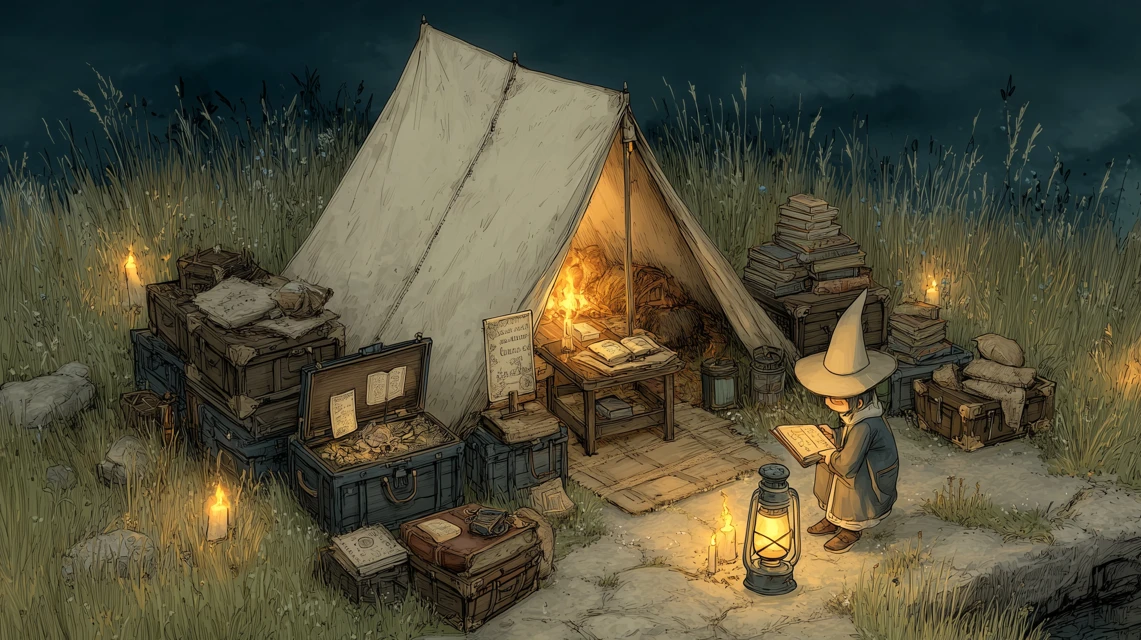

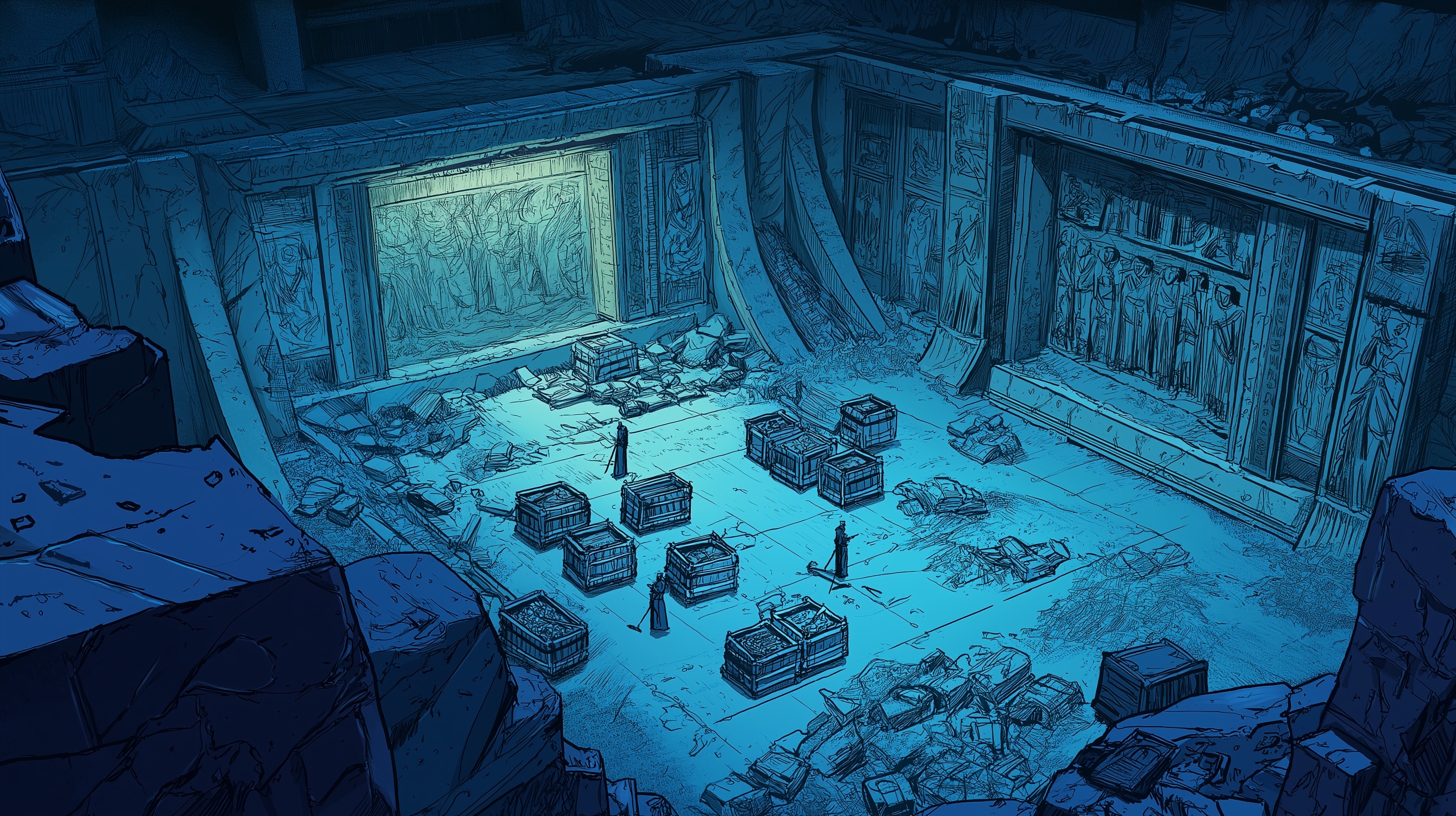
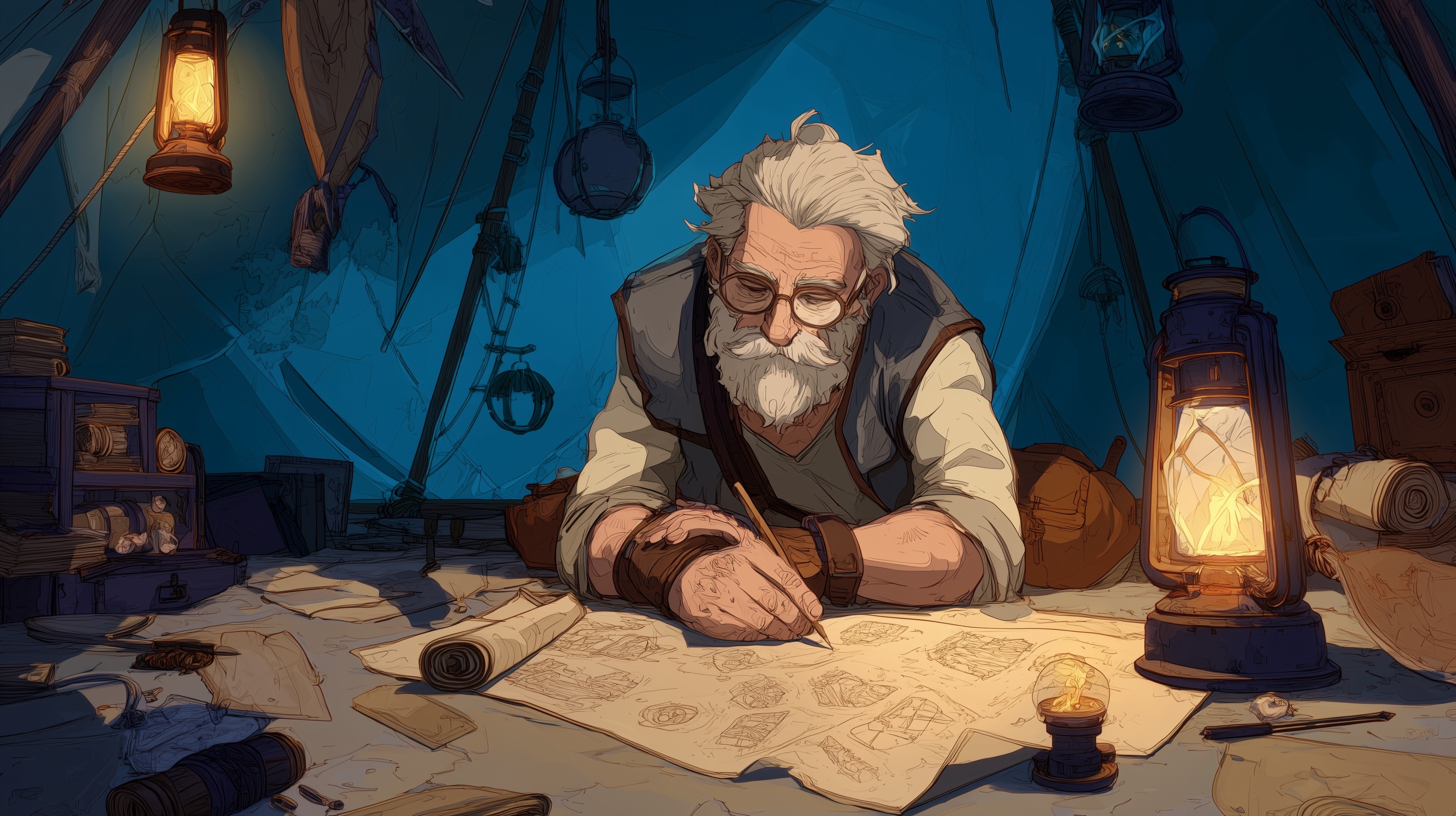
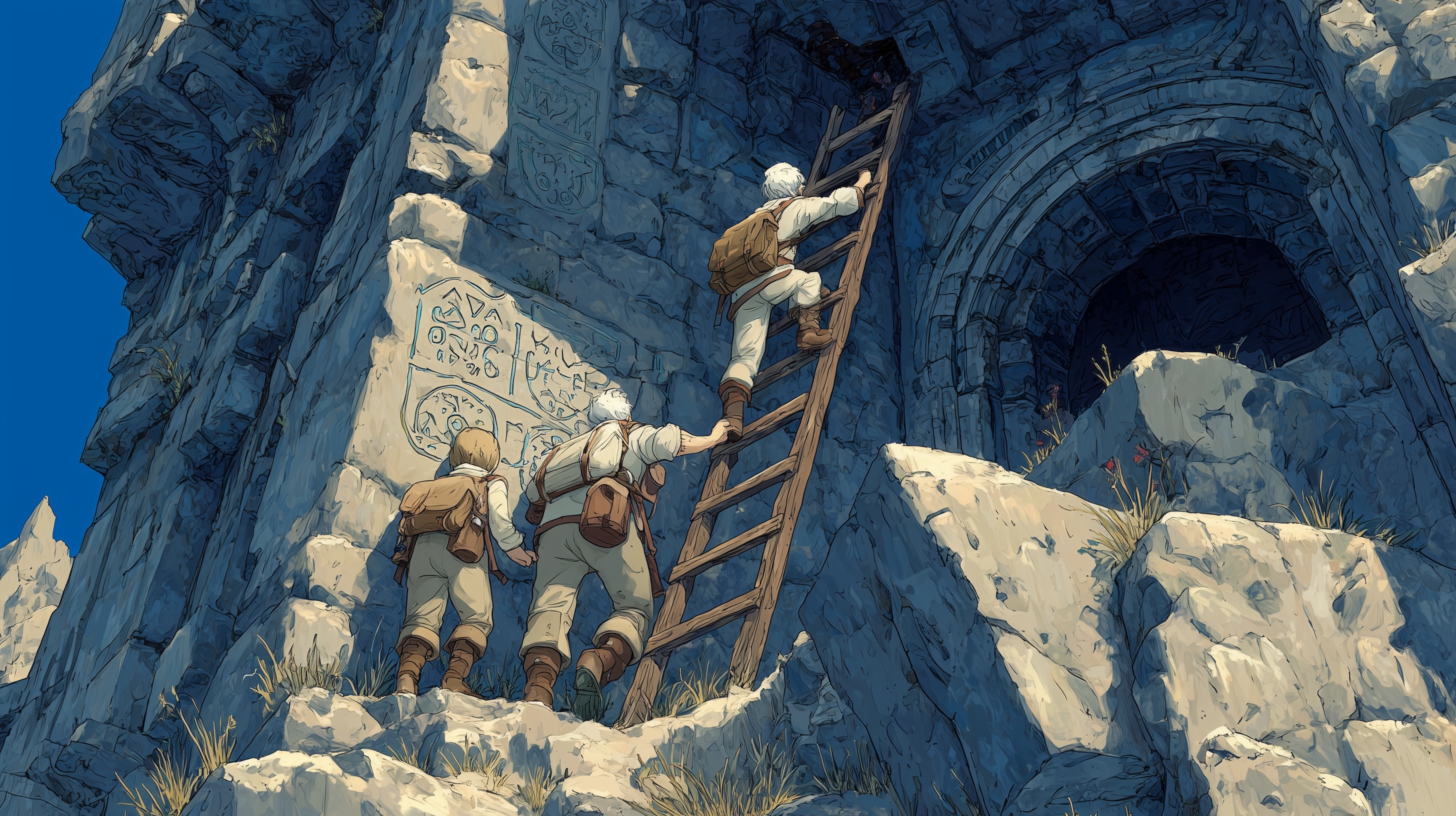
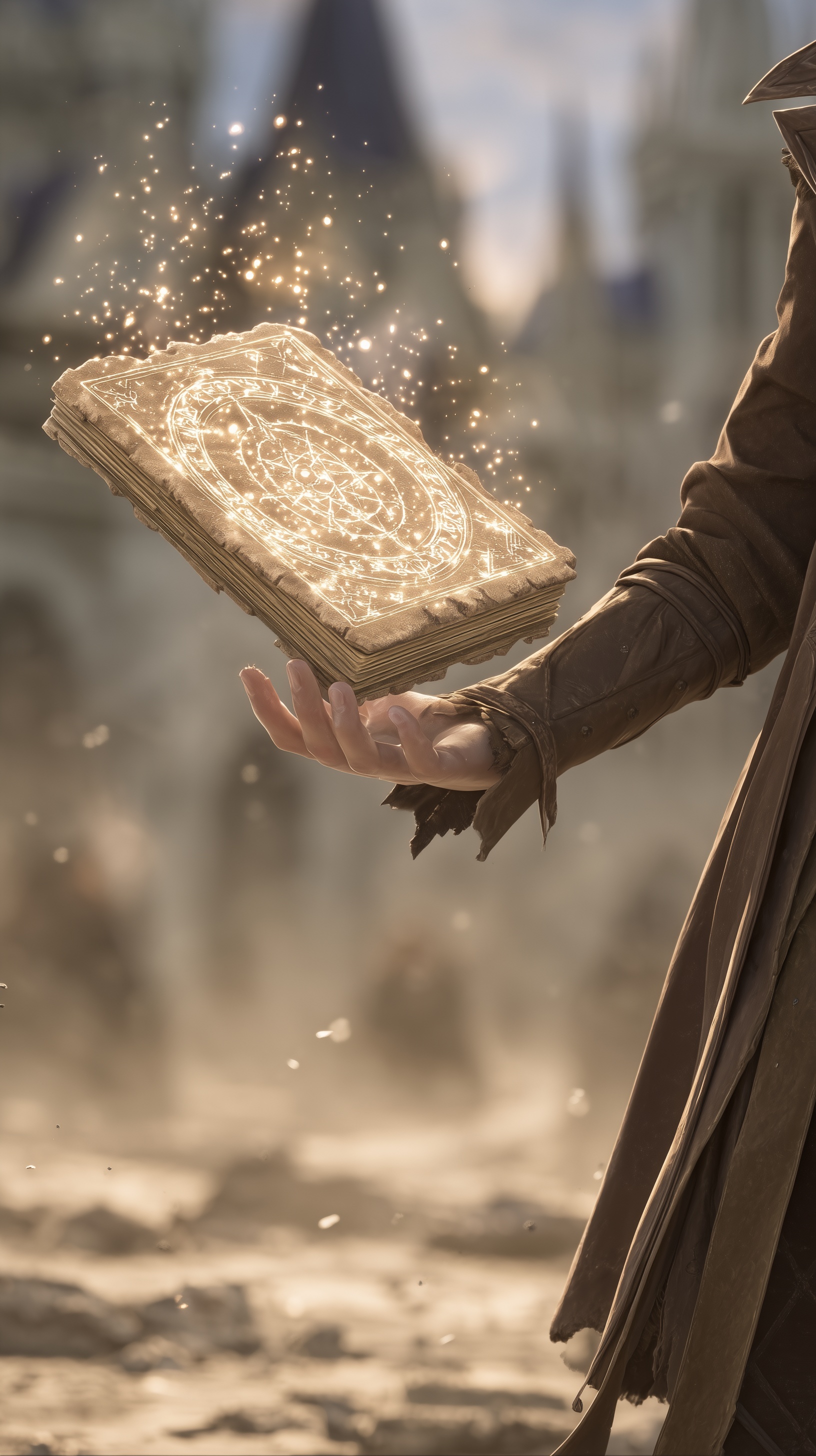

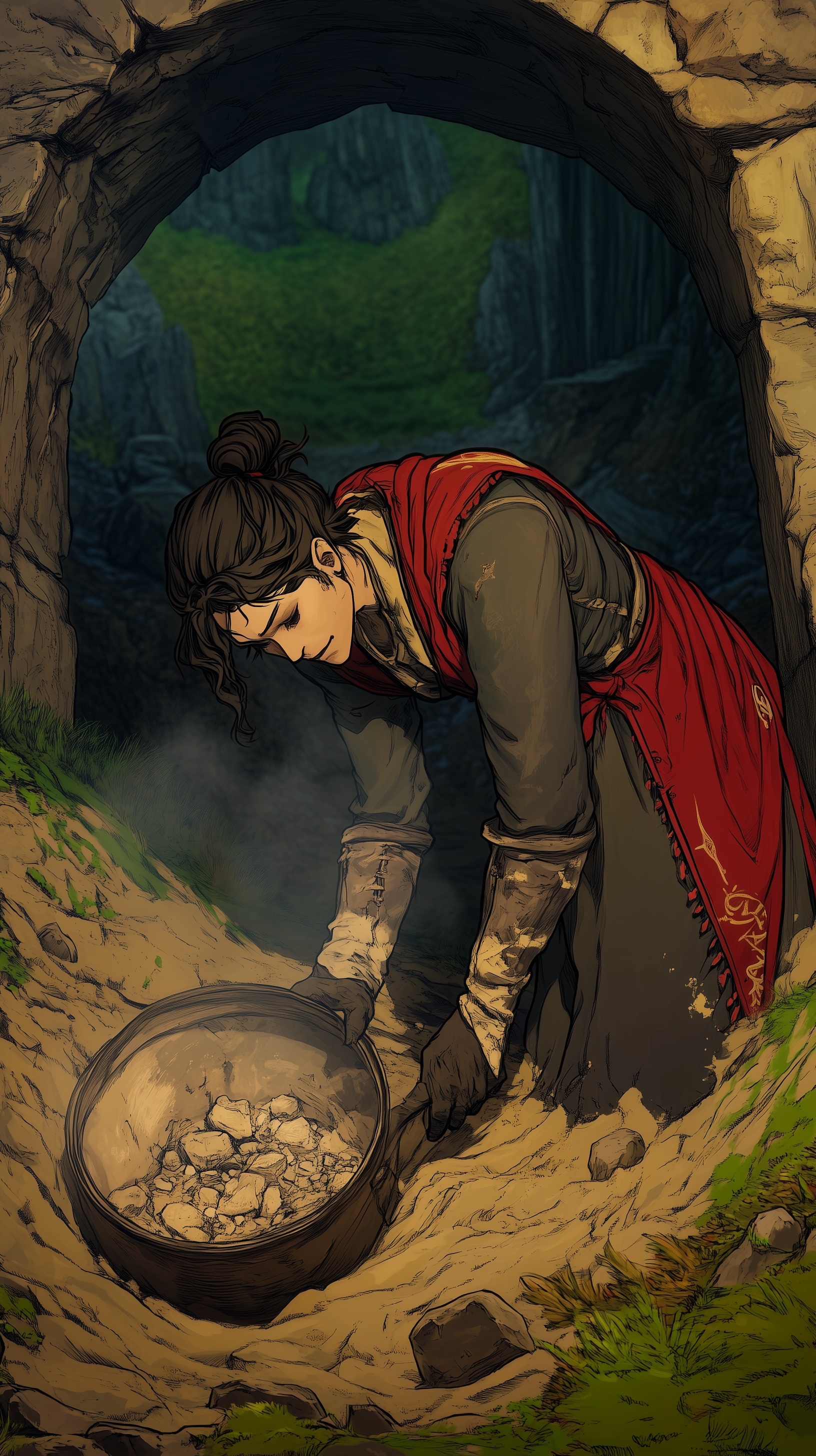
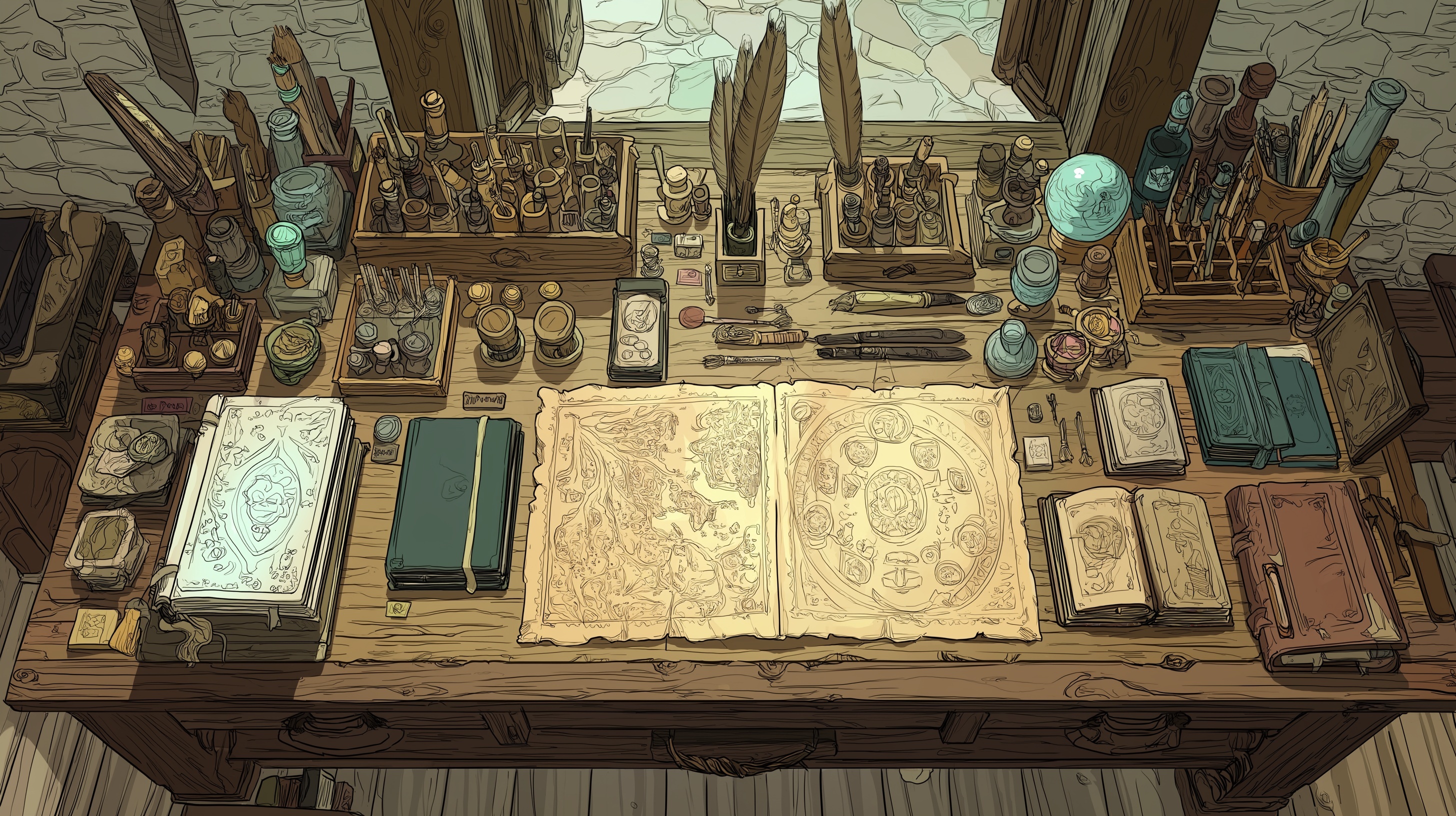
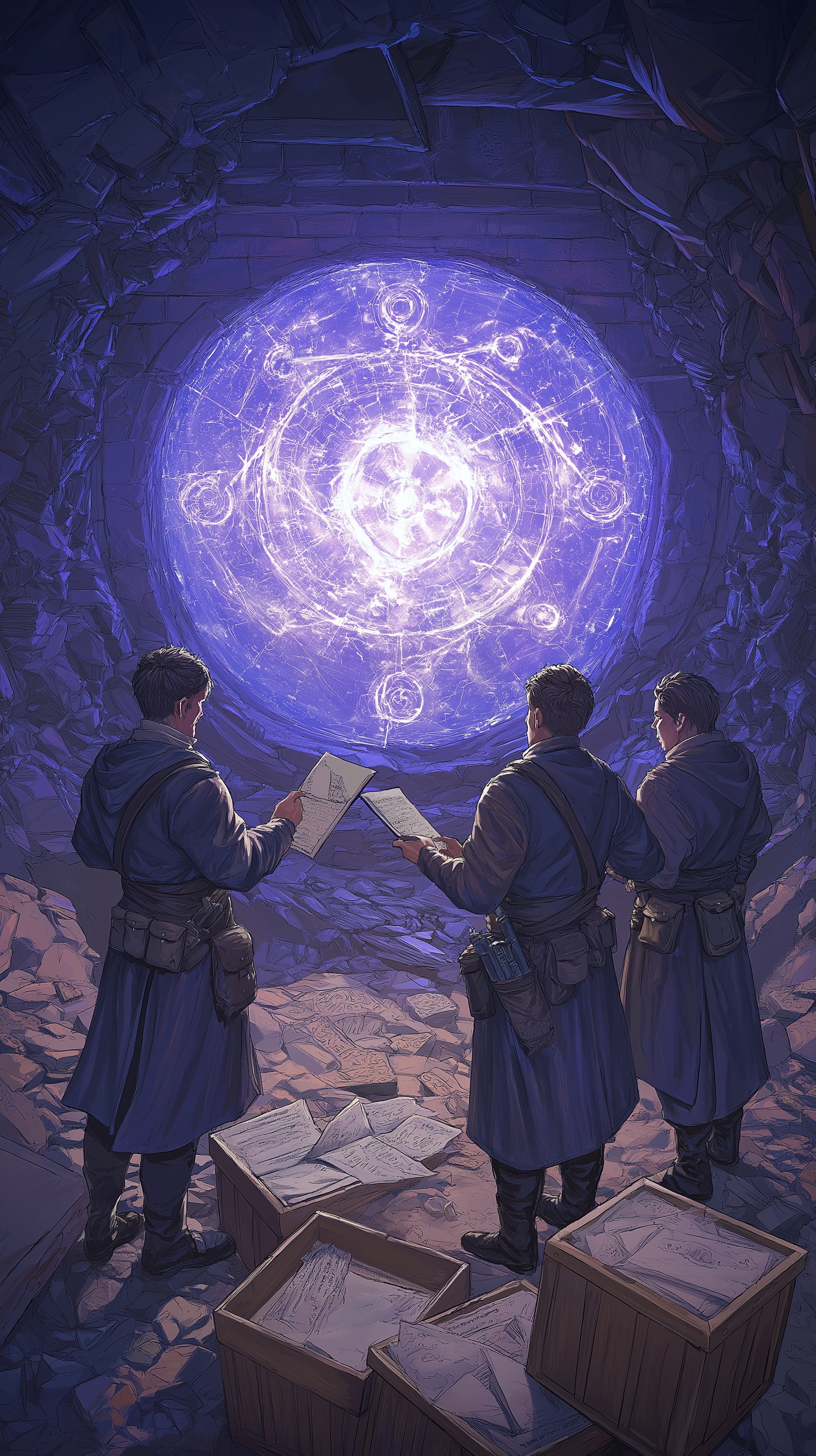
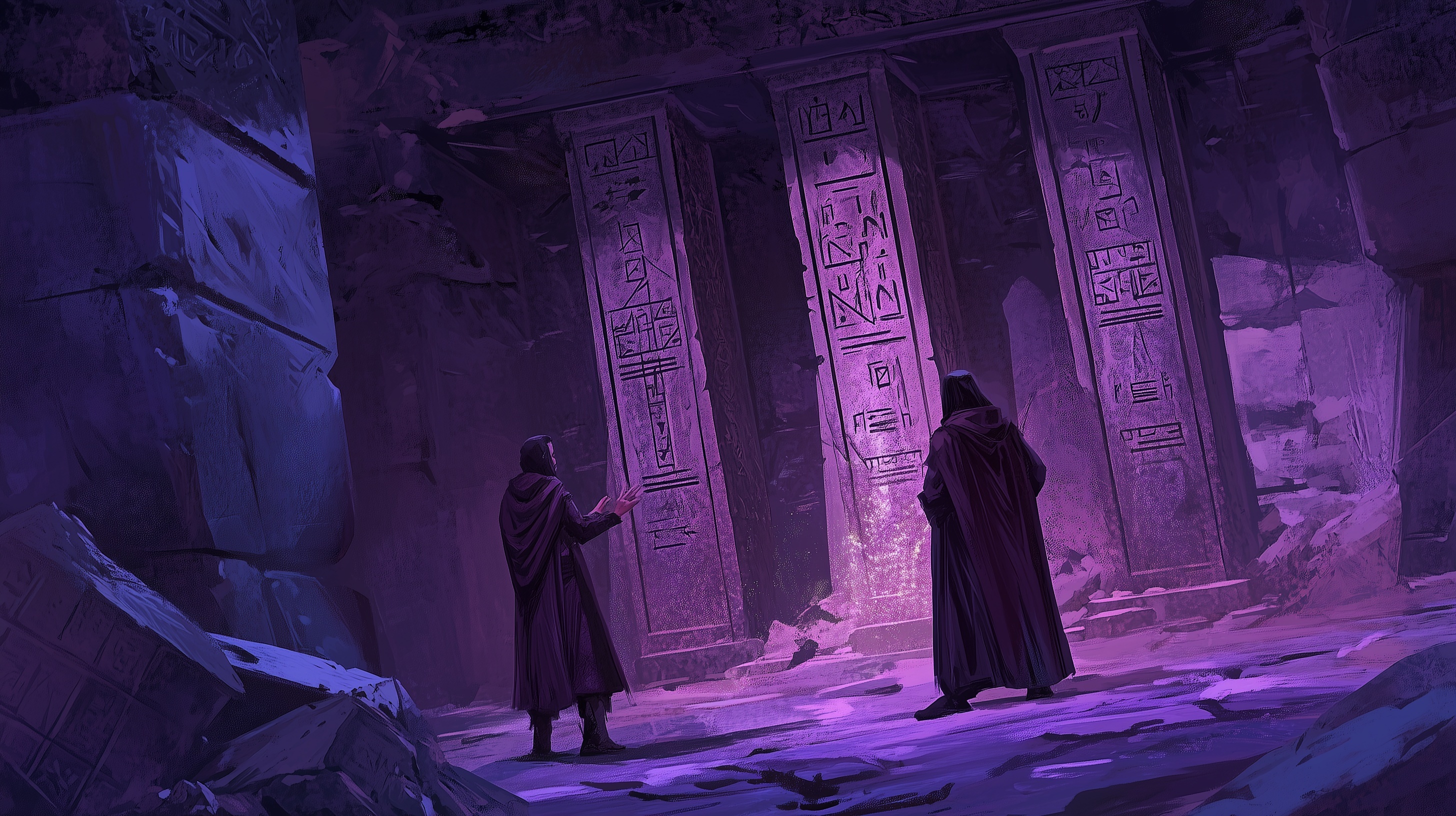
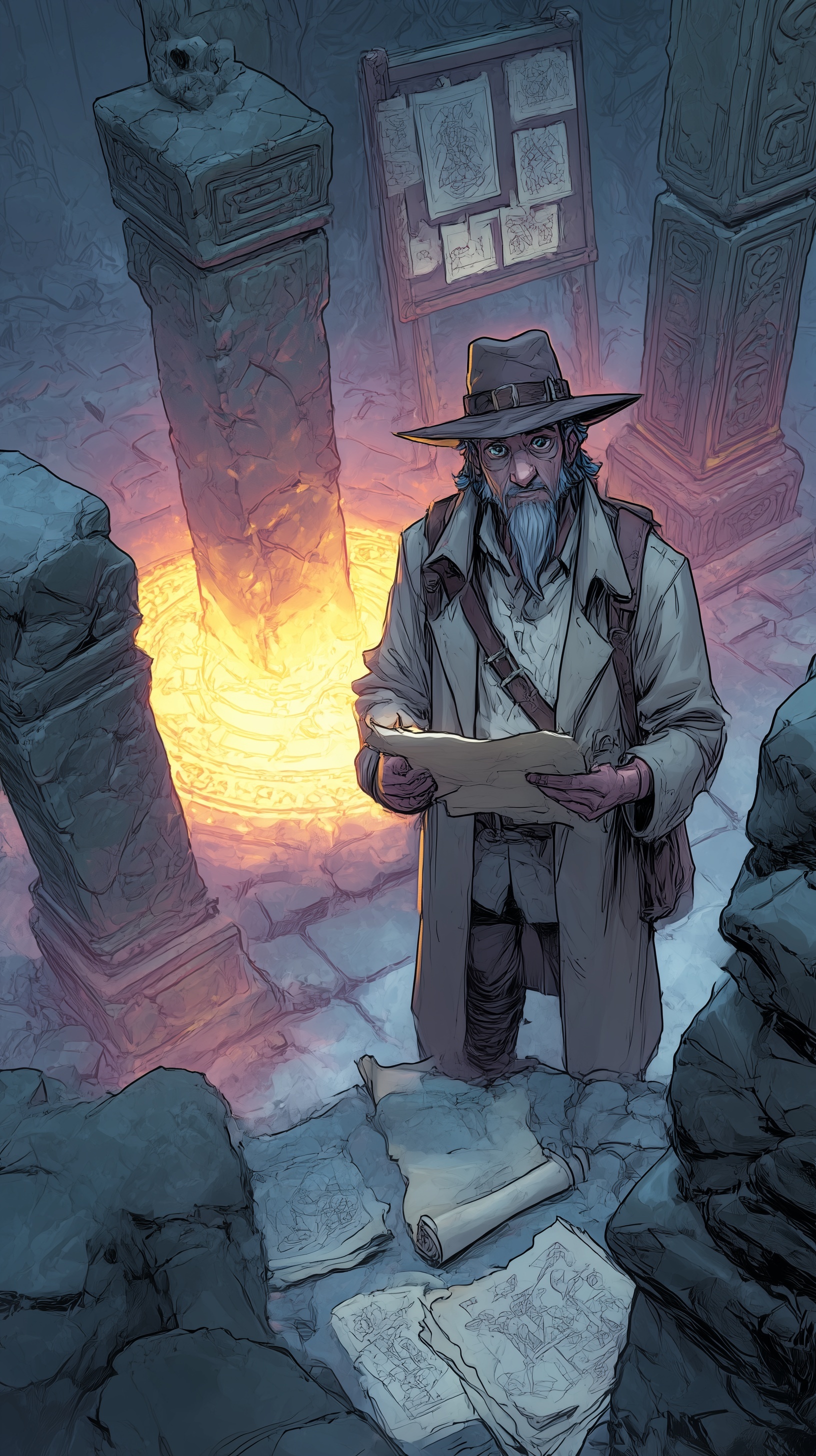
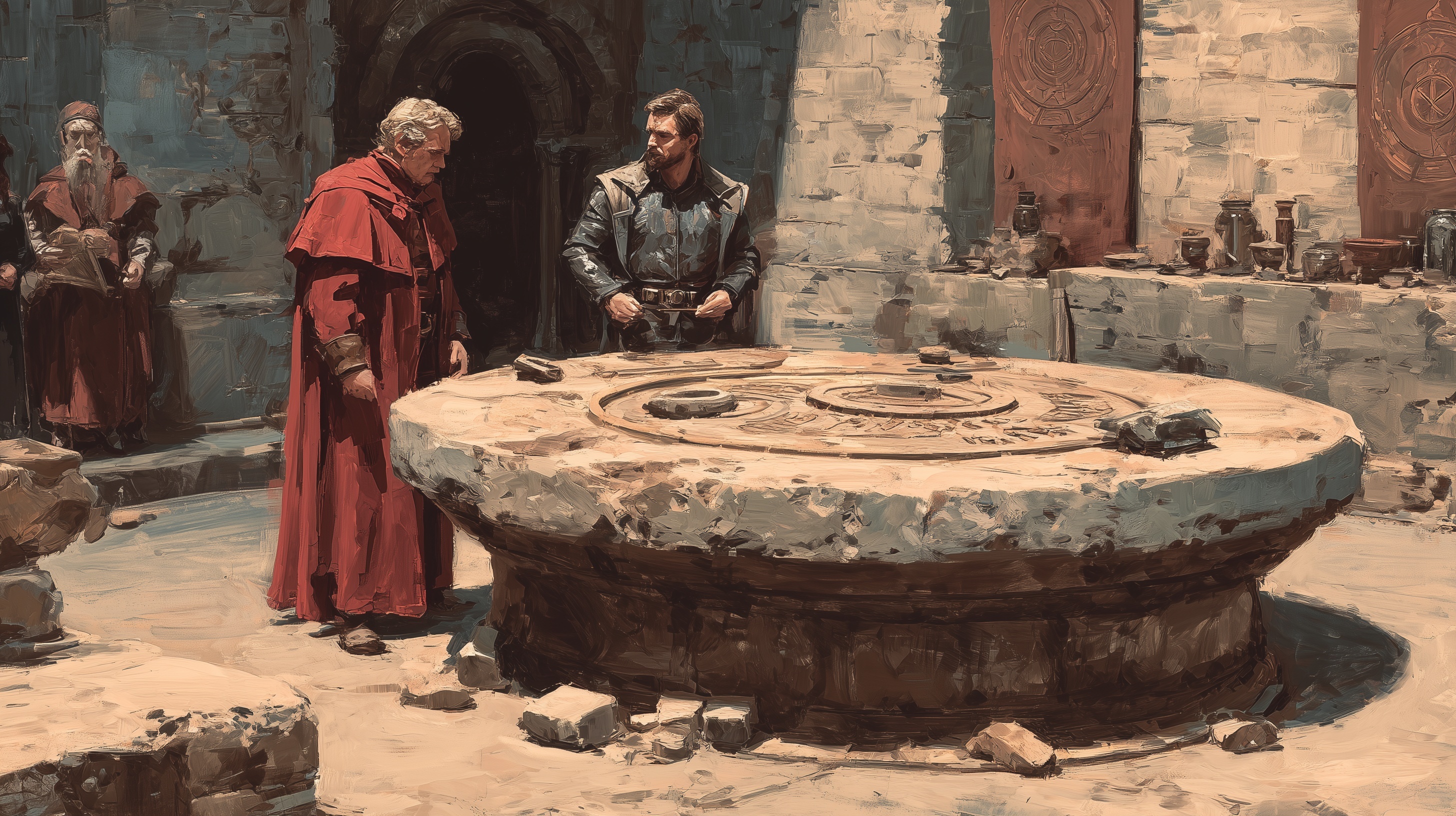

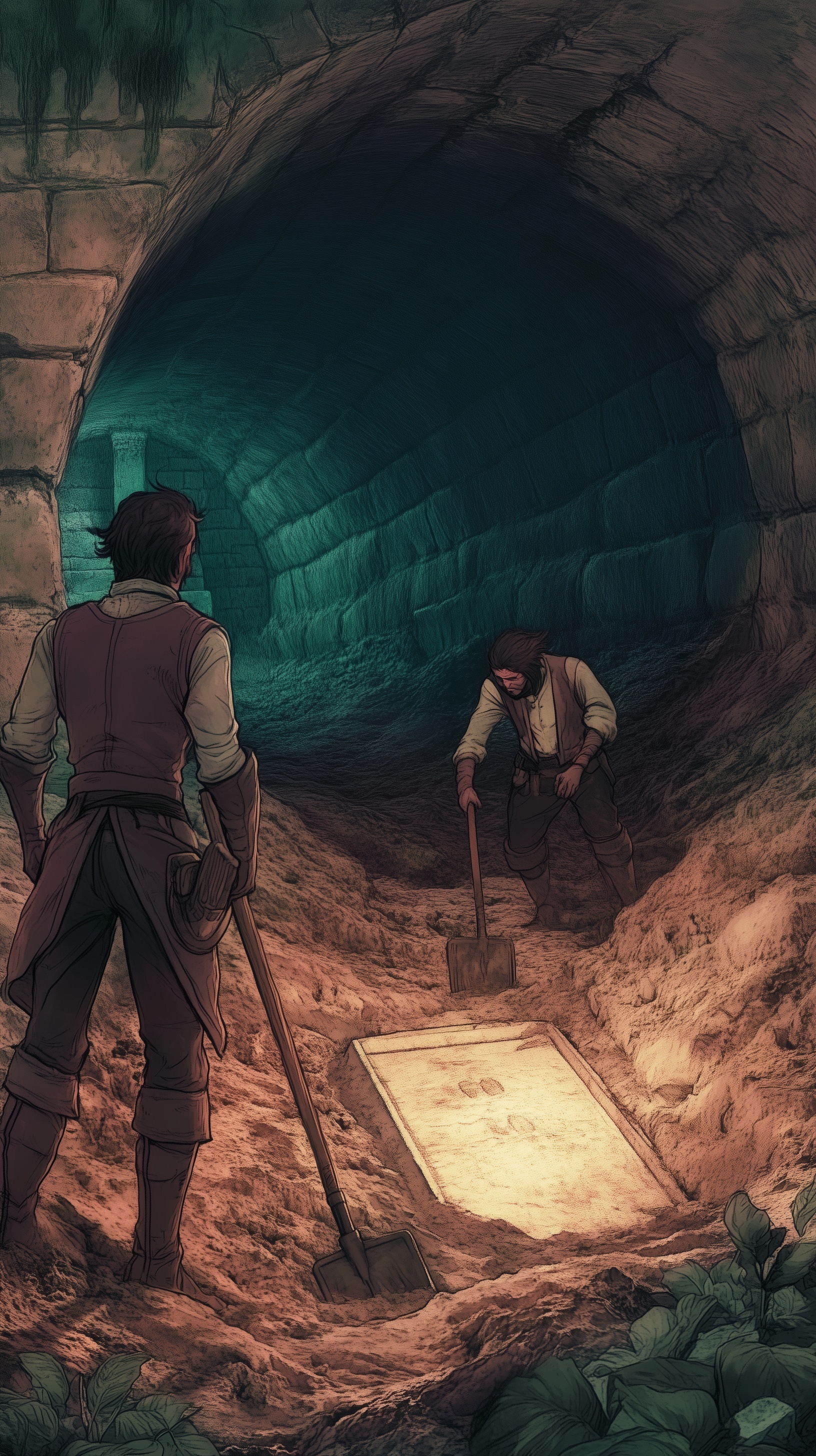
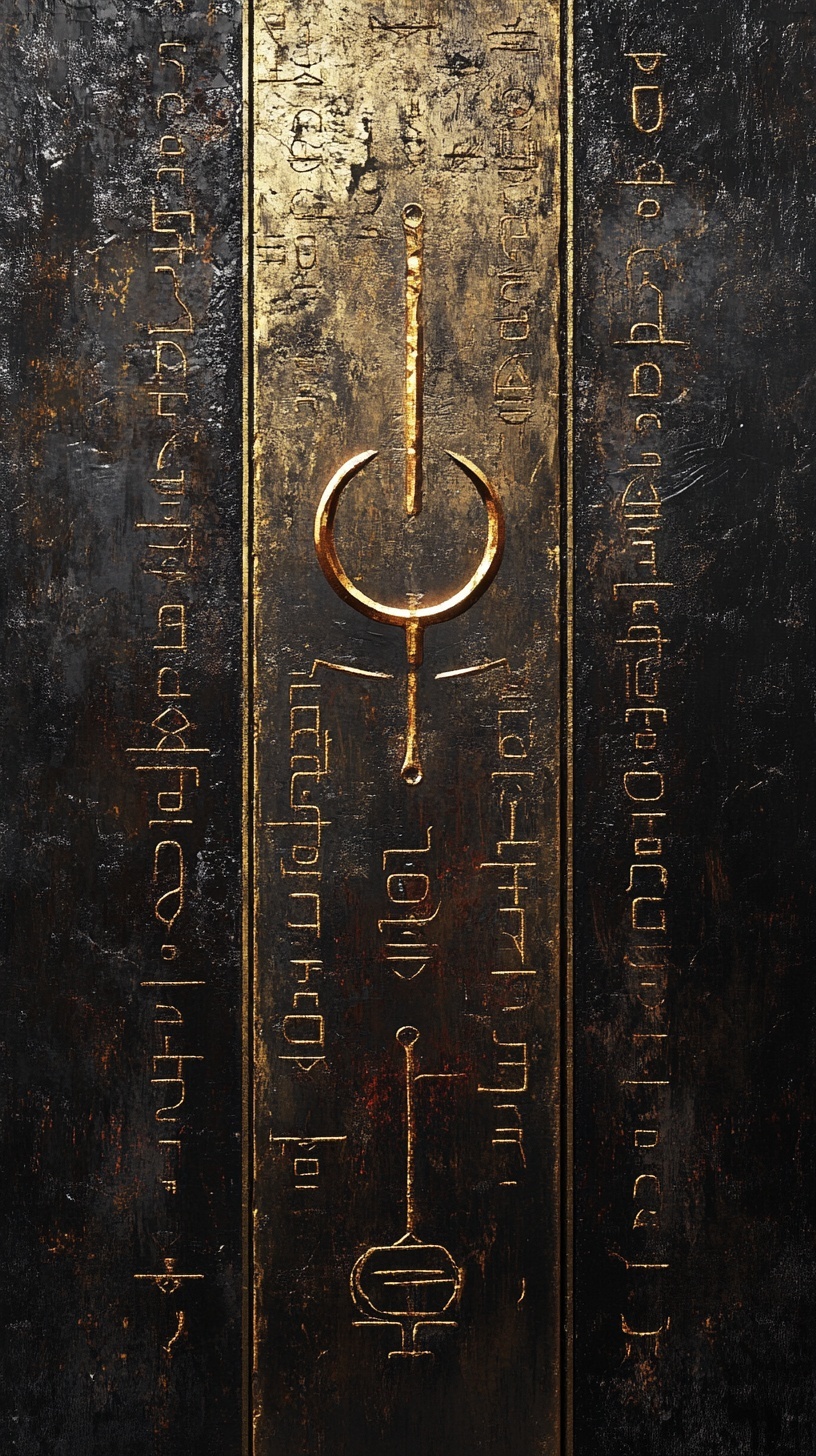



Comments